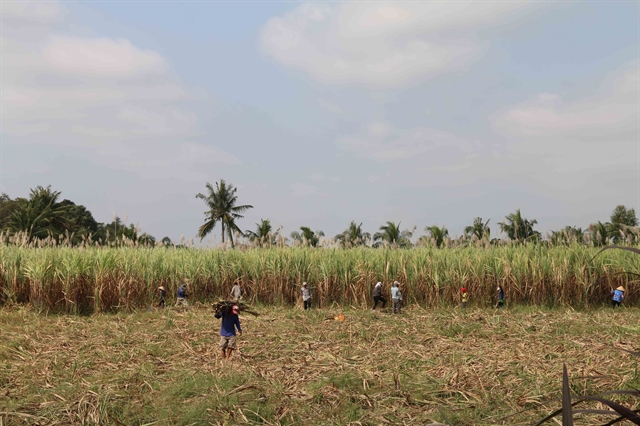 Society
Society

Authorities in Trà Vinh have encouraged farmers in the province’s Trà Cú District to switch to other crops on low-yield sugarcane fields to ensure more reliable incomes.

|
| Farmers harvest sugarcane in Trà Vinh Province’s Trà Cú District. — VNA/VNS Photo Thanh Hòa |
TRÀ VINH — Authorities in Trà Vinh have encouraged farmers in the province’s Trà Cú District to switch to other crops on low-yield sugarcane fields to ensure more reliable incomes.
Farmers in Trà Cú, which is the Cửu Long (Mekong) Delta province’s largest sugarcane growing area, have earned very little incomes or lost money in the last four crops because of low cane prices.
Lý Văn Toàn, who has a 1ha sugarcane field in Lưu Nghiệp Anh Commune, has been among the latter.
“The price of sugarcane has fallen more and more while production costs have increased, especially labour costs,” he said.
Despite suffering losses, he could not switch to other crops because his field is located in an elevated area and lacks water in the dry season.
Trà Cú is a coastal district and is the province’s hardest hit district by the effects of climate change including saltwater intrusion and droughts.
Its People’s Committee has urged sugarcane farmers in areas facing transport and irrigation difficulties to switch to other crops.
In areas where they cannot, it has encouraged sugarcane farmers to invest in machinery and advanced farming techniques to increase yields and reduce costs.
Last year district authorities helped sugarcane farmers switch to corn, sweet potato, vegetables and other crops and shrimp and snakehead fish on more than 1,500ha of land.
They enable farmers to earn VNĐ60 – 80 million (US$2,500 – 3,400) per hectare per year, according to the People’s Committee.
Huỳnh Văn Thảo, head of the district Bureau of Agriculture and Rural Development, said authorities have taught sugarcane farmers techniques to grow new crops.
The district has sought to create links between farmers and agricultural companies to ensure outlets, he said.
In the 2020-21 sugarcane crop, which began in February, farmers in Trà Cú have planted about 737ha so far, according to the district’s Bureau of Agriculture and Rural Development.
The district seeks to plant a total of 1,800ha.
The planting is usually completed in March, but the severe saltwater intrusion this year has delayed it.
Besides, farmers are gradually switching to other crops.
During the 2019 -20 crop, the district had sought to plant 3,500ha but farmers stopped at 2,478ha.
The yield too has fallen in recent years because many farmers are not interested in tending their crop because of the low sugarcane prices.
Farmers in the district have been growing sugarcane for dozens of years since the local soil is ideal for it and prices were steady until 2016-17. — VNS




